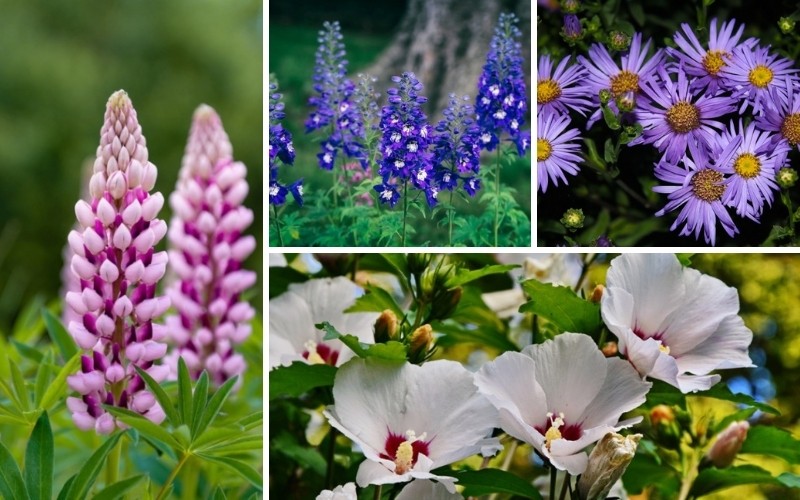If you are a New Jersey gardener, you probably already know how important it is to know which gardening zones your garden is in. New Jersey encompasses two USDA gardening zones from 6a to 7b. While many of the same perennials will thrive in all areas of New Jersey, there are some that will not. Consider these perennial flowers when choosing new flowers for your perennial bed.
Asters (Symphyotrichum novae-angliae)
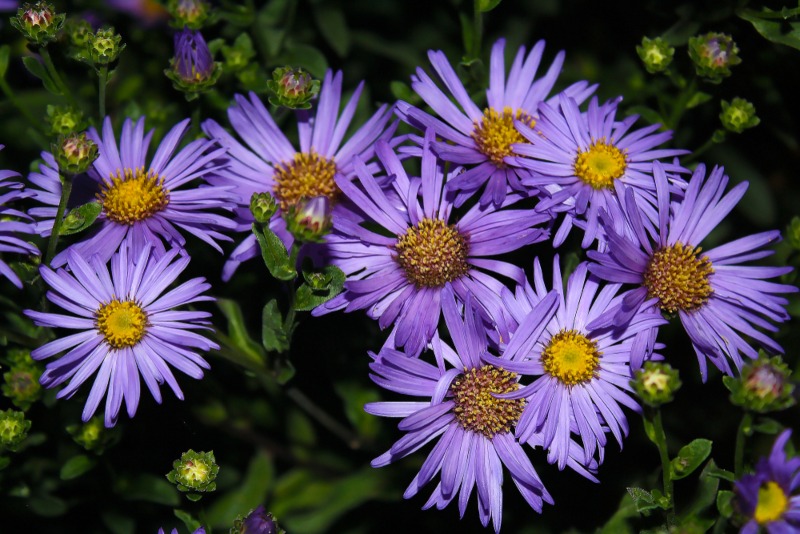
Asters are a must-have for adding a splash of color and movement to the fall flower bed. These daisy-like flowers are frilly with contrasting centers and bloom in large clusters. Colors range from shades of pink and lavender to deep purple, depending on the cultivar. They grow to heights of 3 to 6 feet with a spread of 2 to 3 feet. Asters prefer rich, moist soil in full sun but will grow in average soil. They are hardy in USDA plant hardiness zones 4 through 8.
Bee Balm (Monarda bradburiana)
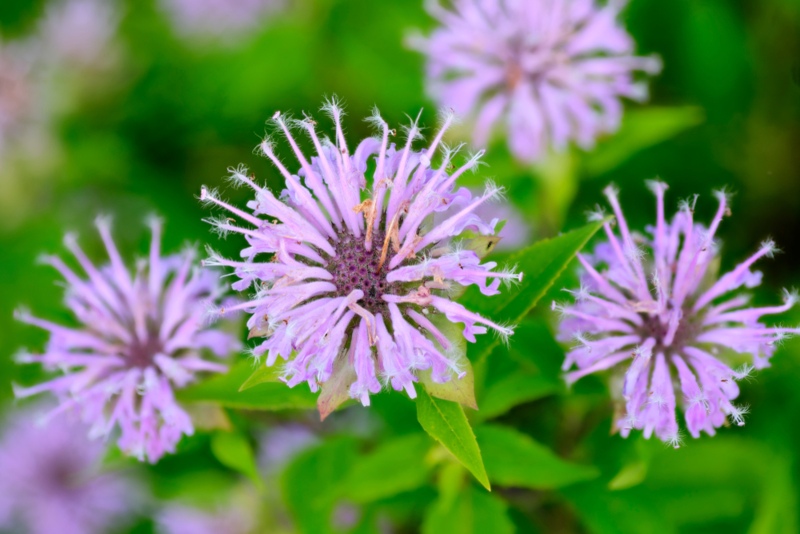
Bee balm produces frilly flowers similar to cornflowers or bachelor’s buttons that range from white to pink or purple. Flowers appear in late spring and continue to bloom for weeks. These flowers attract bees and are a great addition to pollinator gardens. They grow to heights of 1 to 2 feet with a similar spread. Bee balm prefers either full sun or partial shade and likes dry, well-drained soil. Bee balm is hardy in USDA plant hardiness zones 5 through 8.
Blanket Flower (Gaillardia x grandiflora)
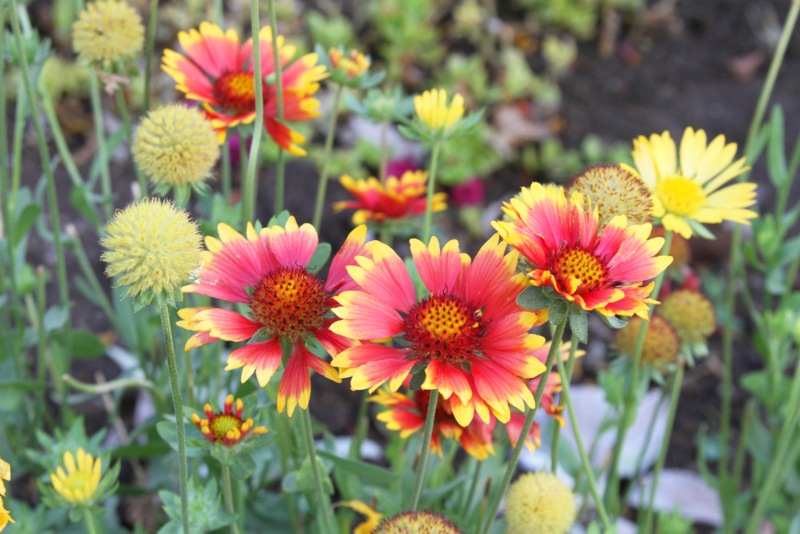
Blanket flowers produce large showy, daisy-like blooms from early summer until the frost arrives in the fall. Colors range from shades of yellow and orange with distinct banding of red or maroon on the petals with distinct contrasting centers. They grow to heights of 2 to 3 feet with a 1 to 2 foot spread and attract bees and butterflies. They prefer moist, humus-rich soil, but will grow in average or sandy soil. Blanket flowers need full sun and are hardy in USDA plant hardiness zones 3 through 10.
Delphinium (Delphinium exaltatum)
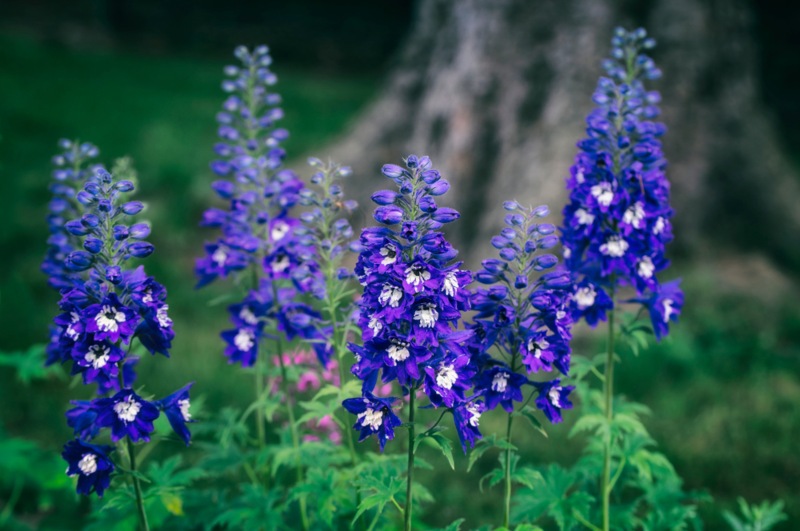
This delphinium goes by the common name of tall larkspur and adds a splash of blue to the flower bed. The flowers appear on a tall stem lined with 1 inch blooms. It blooms from early summer until fall. It grows to a height of 4 to 6 feet with a spread up to 2 feet. Tall larkspur prefers humus-rich soil that drains well. Plant tall larkspur in full sun, but provide some shade from the hot afternoon sun. It is hardy in USDA plant hardiness zones 5 through 7.
Rose Mallow (Hibiscus lasiocarpos)

The rose mallow produces papery, bell-shaped flowers similar to hollyhocks. Colors range from white to rose with a dark crimson eye. This plant grows to heights if 3 to 7 feet with a spread of 2 to 3 feet. It blooms from early summer until well into the fall. Rose mallow likes average, moist soil and does best in full sun. Rose mallow is hardy in USDA plant hardiness zones 5 through 9.
Lupines (Lupinus x hybrida)
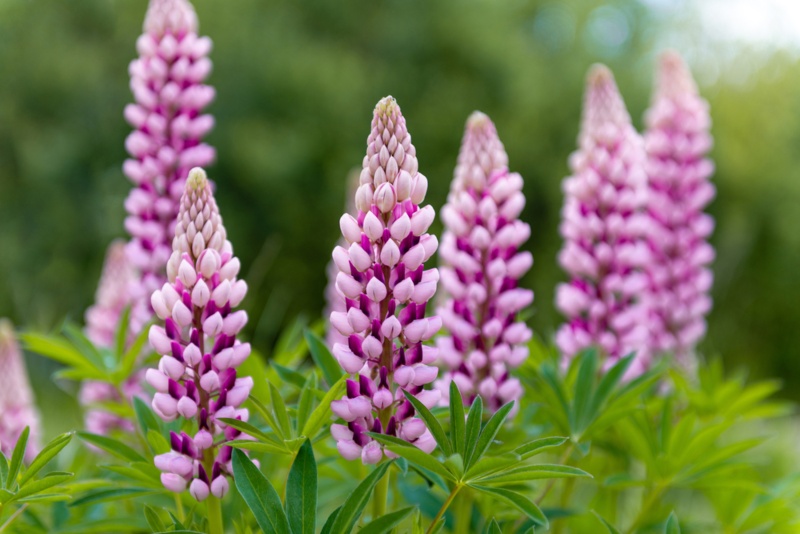
Lovely lupines bloom along a tall spire that gives the illusion of spirals from the distance. This hardy flower blooms in late spring and early summer with flower colors than range from white and pastel pink to blue, purple and rose with some bicolors too. Lupines prefer humus-rich, acidic soil that drains well and perform best in full sun with some afternoon shade. Lupines are hardy in USDA plant hardiness zones 4 through 8.
Peonies (Paeonia japonica)
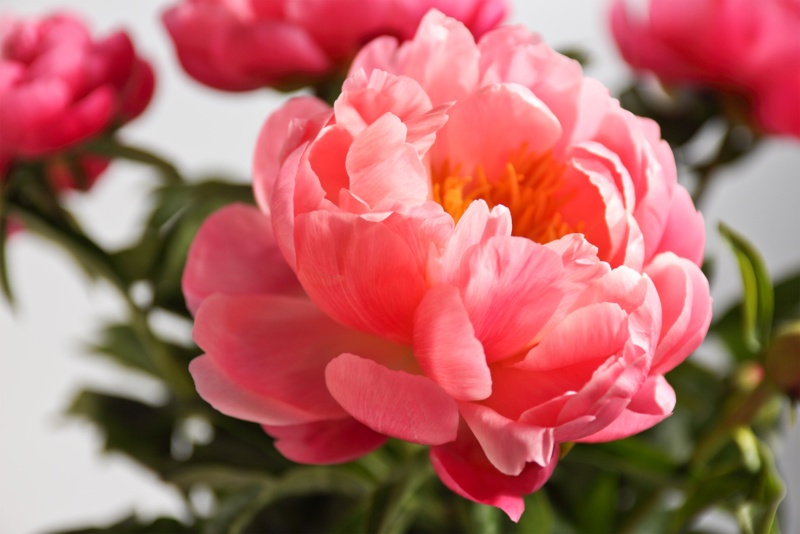
Peonies are large showy flowers that bloom in late spring or early summer before many other perennial flowers are in bloom. The petals can be either single or double and range in color from white and pink to gorgeous shades of rose and red. They grow to heights of 3 feet or more with a spread of 1 to 2 feet at maturity. Peonies prefer humus-rich soil that drains well. They thrive in either full sun or partial shade and are hardy in USDA plant hardiness zones 5 through 8.
Oriental Poppies (Papaver orientale)
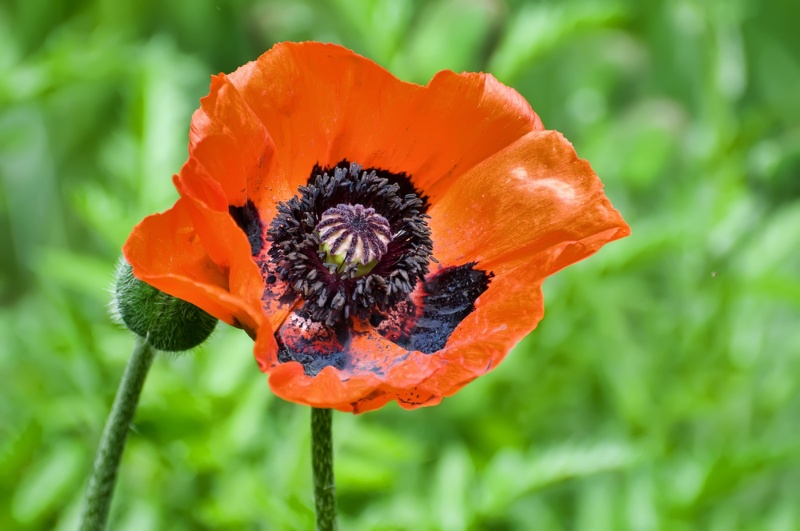
Poppies brighten the garden with their papery blooms that wave in a gentle breeze. Traditional blooms are red-orange, but hybrids offer a range of colors from white, pink and purple to stunning shades of salmon and peach. They reach heights of 1 to 3 feet with a spread to 2 feet and bloom from spring to summer. Oriental poppies prefer full sun and fertile, well-drained soil. They are hardy in USDA plant hardiness zones 3 through 9.
Violets (Viola sororia)
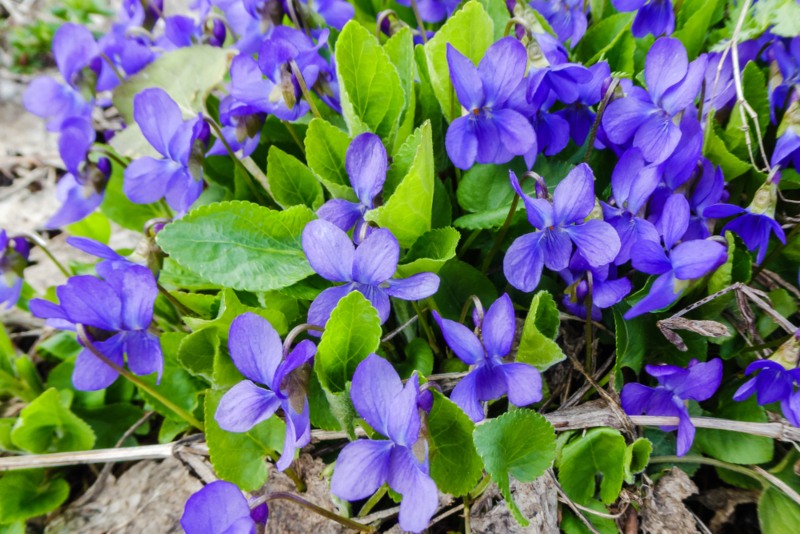
The common blue violet makes an excellent addition to the perennial bed. This low-growing perennial blooms in early spring through to mid-summer. It grows to heights of 6 to 8 inches with a similar spread. Violets prefer rich, fertile soil that does not dry out excessively. It grows well in either full sun or partial shade and is hardy in USDA plant hardiness zones 3 through 7.
Black-Eyed Susans (Rudbeckia spp.)

Rudbeckia provides long-lasting color in the flower bed and comes in an assortment of colors other than the traditional orange petals with a chocolate center. Colors run the gambit from pale yellow with green eyes to rich autumn shades of orange and nearly red. They grow to heights of 3 to 4 feet and prefer full sun. Rudbeckia thrives in nearly any soil as long as it drains well. They are hardy in USDA plant hardiness zones 3 through 7.
Russian Sage (Perovskia atriplicifolia)
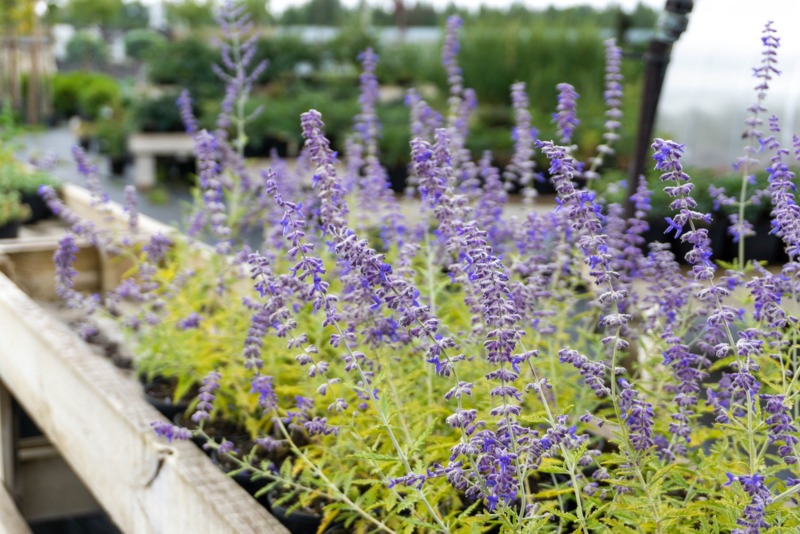
Russian sage provides long-lasting color in the flower bed, blooming from early to mid-summer until the frost arrives in the fall. Its tall, slender spikes covered in soft blooms in shades of purple and blue are similar to lavender. Both the foliage and flowers are aromatic and attract pollinators to the garden. It grows to heights of 3 to 5 feet with a spread of 2 to 4 feet. Russian sage prefers average, well-drained soil and performs best in full sun. It is hardy in USDA plant hardiness zones 5 through 9.
Quick Tip
It is important to keep your specific gardening site in mind when choosing new perennials. Look for those that match your planting zone and growing conditions. Always check the plant identification label to be sure as growing requirements can vary even between cultivars of the same plant.


